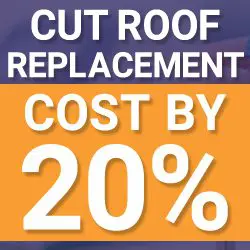
Stop Wasting Money: Signs Your Roof Needs Replacement Now
Your roof is one of the most critical components of your home. It protects you and your family from the elements, provides insulation, and contributes to the structural integrity of your house. However, like any part of your home, your roof has a lifespan and will eventually need to be replaced. Ignoring the signs that your roof needs replacement can lead to costly repairs, increased energy bills, and even structural damage. This comprehensive guide will help you identify the signs that it’s time to stop wasting money on repairs and invest in a new roof.
Understanding the Importance of a Healthy Roof
Before delving into the signs that indicate you need a new roof, it’s essential to understand why maintaining a healthy roof is so important. A well-maintained roof provides several benefits:
- Protection from the Elements: Your roof shields your home from rain, snow, wind, and sunlight, preventing water damage and maintaining structural integrity.
- Energy Efficiency: A properly insulated and ventilated roof helps regulate indoor temperatures, reducing energy costs.
- Increased Home Value: A new, well-maintained roof can significantly boost your home’s curb appeal and market value.
- Preventing Structural Damage: A compromised roof can lead to water leaks, mold growth, and damage to the interior and foundation of your home.
Signs Your Roof Needs Replacement
Recognizing the signs that your roof needs replacement is crucial to prevent further damage and financial loss. Here are some key indicators that it’s time to consider a roof replacement:
Age of the Roof
The age of your roof is one of the most significant factors in determining whether it needs replacement. Most roofing materials have a specific lifespan:
- Asphalt Shingles: 20-25 years
- Wood Shingles: 20-30 years
- Metal Roofs: 40-70 years
- Clay Tiles: 50-100 years
- Slate Tiles: 75-200 years
If your roof is nearing the end of its expected lifespan, it’s time to start planning for a replacement. Even if it appears to be in good condition, an aging roof is more susceptible to damage and may not provide adequate protection.

Curling, Cracked, or Missing Shingles
Shingles are your roof’s first line of defense against the elements. When they start to curl, crack, or go missing, your roof’s ability to protect your home is compromised.
- Curling Shingles: Shingles that are curling or buckling indicate that they are past their prime and need to be replaced.
- Cracked Shingles: Cracks can develop due to weathering and age, making your roof more vulnerable to leaks.
- Missing Shingles: If you notice missing shingles, it’s a clear sign that your roof is deteriorating and needs attention.
Granules in the Gutters
Asphalt shingles are coated with granules that protect them from UV rays and provide fire resistance. Over time, these granules can wear off and accumulate in your gutters. If you notice an excessive amount of granules in your gutters, it’s a sign that your shingles are wearing out and need to be replaced.
Leaks and Water Damage
Water leaks and stains on your ceilings or walls are clear indicators that your roof is failing. Leaks can lead to significant water damage, mold growth, and even structural issues if not addressed promptly.
- Water Stains: Brown or yellow stains on your ceilings or walls indicate water intrusion, which can be traced back to a compromised roof.
- Mold and Mildew: The presence of mold or mildew in your attic or on your ceilings is a sign of persistent moisture problems, often caused by a leaky roof.
Sagging Roof Deck
A sagging roof deck is a serious structural issue that requires immediate attention. It indicates that your roof’s underlying structure is compromised, possibly due to water damage, rot, or inadequate support. A sagging roof can collapse if not addressed promptly, posing a significant safety risk.
Increased Energy Bills
If you’ve noticed a sudden spike in your energy bills, your roof might be to blame. An aging or damaged roof can lead to poor insulation and ventilation, causing your heating and cooling systems to work harder to maintain a comfortable temperature. Replacing your roof with energy-efficient materials can help reduce your energy costs.
Daylight Through Roof Boards
Inspect your attic regularly for signs of daylight shining through the roof boards. If you can see sunlight coming through, it’s a clear indication that your roof has holes or cracks that need to be addressed. These gaps can allow water and pests to enter your home, leading to further damage.
Damaged Flashing
Flashing is the material used to seal joints and prevent water from entering your roof around chimneys, vents, and skylights. Damaged or deteriorating flashing can lead to leaks and water damage. If you notice rusted, cracked, or missing flashing, it’s time to consider a roof replacement.

Benefits of Timely Roof Replacement
Investing in a new roof when you notice the signs of deterioration can provide several benefits:
Enhanced Protection
A new roof offers better protection against the elements, reducing the risk of water damage, mold growth, and structural issues. Modern roofing materials are designed to withstand harsh weather conditions and provide superior durability.
Improved Energy Efficiency
A new roof with proper insulation and ventilation can significantly improve your home’s energy efficiency. This results in lower heating and cooling costs and a more comfortable indoor environment. Energy-efficient roofing materials, such as cool roofs, reflect more sunlight and absorb less heat, further reducing energy consumption.
Increased Home Value
Replacing your roof can boost your home’s curb appeal and market value. Prospective buyers are more likely to be interested in a home with a new, well-maintained roof. This investment can yield a higher return when it comes time to sell your home.
Peace of Mind
Knowing that your roof is in good condition provides peace of mind. You won’t have to worry about leaks, water damage, or unexpected repairs. A new roof can last for decades, providing long-term security and stability for your home.
Choosing the Right Roofing Material
When it comes to roof replacement, selecting the right material is crucial. Here are some common roofing materials and their benefits:
Asphalt Shingles
Asphalt shingles are the most popular roofing material due to their affordability, durability, and ease of installation. They come in a variety of colors and styles, making them a versatile choice for any home.
Pros:
- Cost-effective
- Easy to install
- Wide range of styles and colors
Cons:
- Shorter lifespan compared to other materials
- Susceptible to wind and hail damage

Metal Roofing
Metal roofs are known for their durability, longevity, and energy efficiency. They can withstand extreme weather conditions and are resistant to fire, rot, and insect damage.
Pros:
- Long lifespan (40-70 years)
- Energy-efficient
- Low maintenance
Cons:
- Higher initial cost
- Can be noisy during rain or hail
Wood Shingles and Shakes
Wood shingles and shakes provide a natural, rustic appearance that enhances the aesthetic appeal of your home. They are typically made from cedar, redwood, or pine.
Pros:
- Attractive, natural appearance
- Good insulation properties
Cons:
- Higher maintenance requirements
- Susceptible to fire and insect damage
Clay and Concrete Tiles
Clay and concrete tiles are durable and long-lasting, with a lifespan of up to 100 years. They are resistant to fire, rot, and insect damage, making them an excellent choice for long-term durability.
Pros:
- Extremely durable
- Fire-resistant
- Variety of styles and colors
Cons:
- Heavy, may require additional structural support
- Expensive

Slate Roofing
Slate is a premium roofing material known for its beauty and longevity. It can last up to 200 years with proper maintenance and is highly resistant to fire, rot, and insects.
Pros:
- Unmatched durability and longevity
- Elegant, natural appearance
- Low maintenance
Cons:
- Very expensive
- Heavy, may require additional structural support
Hiring a Professional Roofing Contractor
Replacing a roof is a significant investment, and it’s essential to hire a reputable roofing contractor to ensure the job is done correctly. Here are some tips for selecting the right contractor:
Verify Credentials
Ensure the contractor is licensed, insured, and bonded. Check for any certifications from roofing manufacturers, which indicate expertise in installing specific roofing materials.
Request References
Ask for references from previous clients and check online reviews. A reputable contractor should have a history of satisfied customers and quality work.
Get Multiple Quotes
Obtain quotes from at least three different contractors. Compare the scope of work, materials, warranties, and costs to make an informed decision.
Review the Contract
Before signing a contract, review it carefully. Ensure it includes details about the scope of work, materials, timeline, payment schedule, and warranty information.
Ignoring the signs that your roof needs replacement can lead to costly repairs, increased energy bills, and even structural damage. By recognizing the warning signs and investing in a new roof, you can enhance your home’s protection, improve energy efficiency, increase its value, and enjoy peace of mind.
Selecting the right roofing material and hiring a reputable contractor are crucial steps in ensuring a successful roof replacement. Whether you choose asphalt shingles, metal roofing, wood shakes, clay tiles, or slate, a new roof is an investment in your home’s future.




Leave a Reply